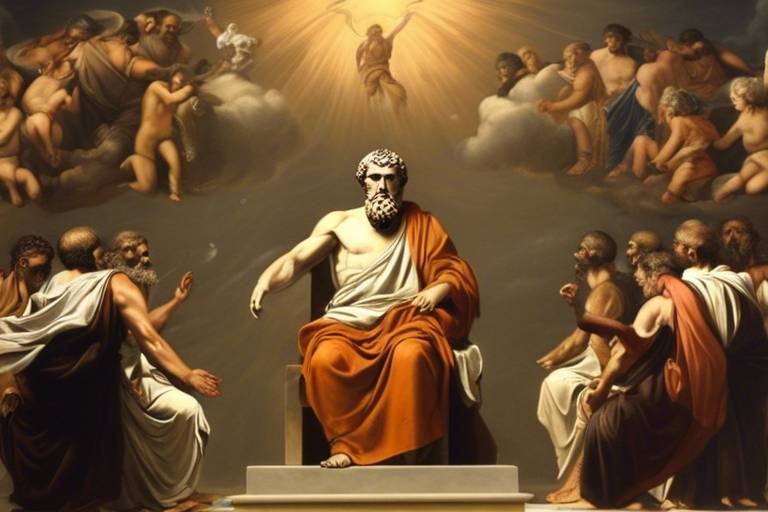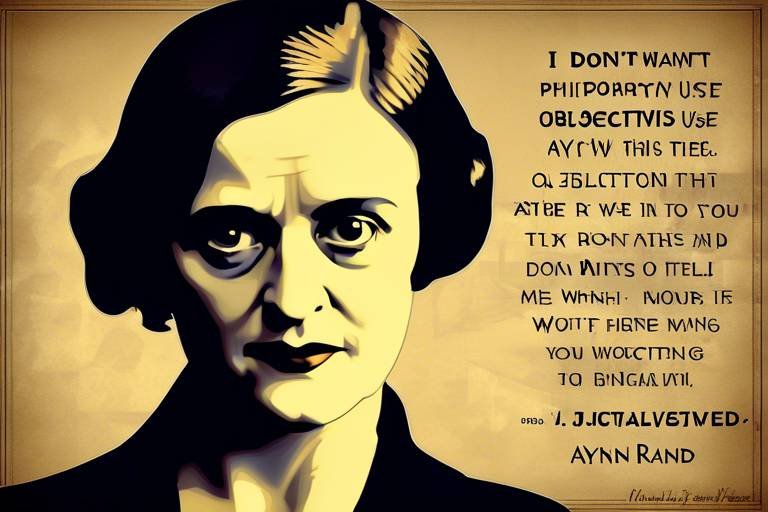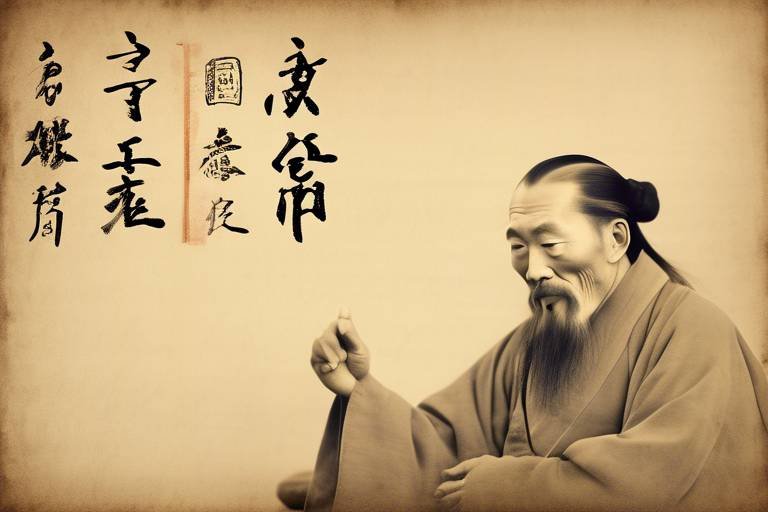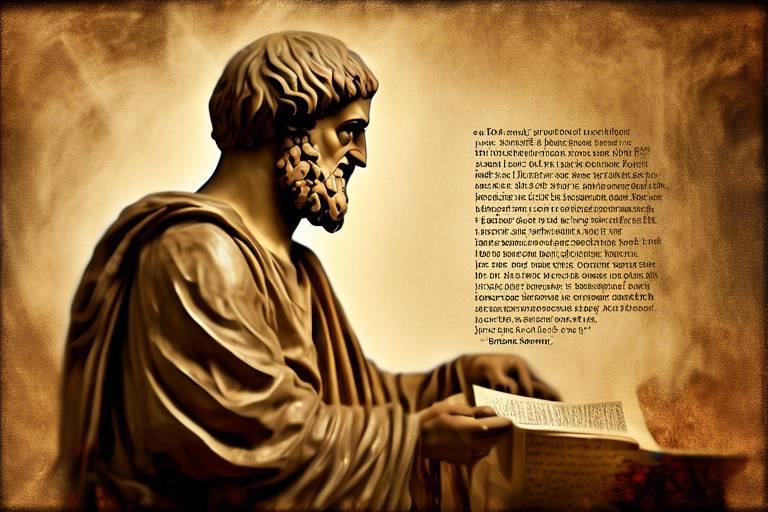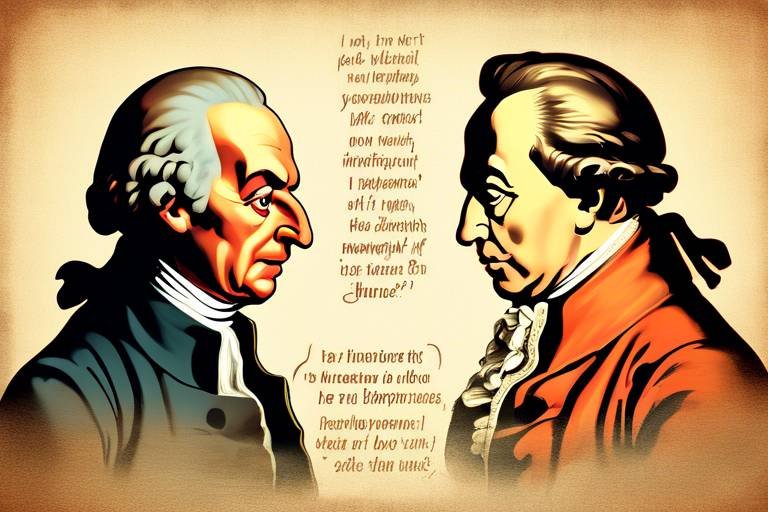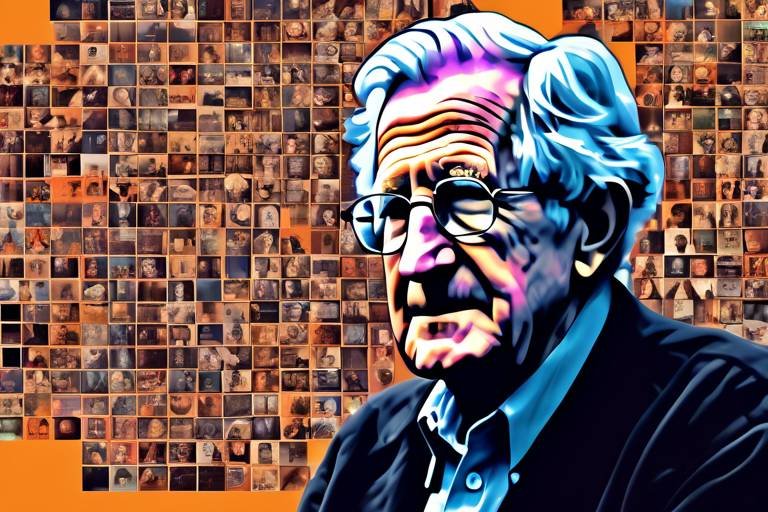Life and Ethical Teachings of Mohandas 'Mahatma' Gandhi
Mahatma Gandhi, a name that reverberates through history, stands as a beacon of hope and a champion of non-violence. His life was a tapestry woven with threads of **compassion**, **courage**, and **conviction**. Born on October 2, 1869, in Porbandar, India, Gandhi's journey from a young boy to a global icon of peace is nothing short of extraordinary. His teachings and philosophy have transcended borders, inspiring millions to pursue justice without resorting to violence. But what exactly shaped this remarkable man? What principles did he hold dear that continue to resonate with us today? Let's delve into the life and ethical teachings of this great leader.
Gandhi's formative years were pivotal in shaping his worldview. Growing up in a traditional Hindu family, he was exposed to various cultural and religious teachings that laid the foundation for his future activism. His early education in India was complemented by his time in England, where he studied law. It was during these years that he encountered different philosophies, including **Christianity**, **Jainism**, and **Buddhism**, which profoundly influenced his thoughts on morality and ethics. The seeds of **social justice** and **human rights** were sown during this time, as he grappled with the injustices faced by Indians in British-ruled India. This blend of experiences crafted a unique perspective that would later define his approach to activism.
At the heart of Gandhi's teachings lies the principle of **Ahimsa**, or non-violence. This philosophy advocates for a life devoid of harm—be it in thought, word, or action. Gandhi believed that every living being deserves respect and dignity, and that true strength lies in the ability to forgive and love, even in the face of oppression. He famously stated, "Non-violence is the greatest force at the disposal of mankind." This powerful assertion highlights his belief in the moral imperative to reject harm and embrace peace. Gandhi's commitment to non-violence was not merely a strategy; it was a way of life, a **spiritual practice** that required immense discipline and inner strength.
Gandhi's application of non-violence during key movements, such as the **Salt March** in 1930, serves as a testament to the effectiveness of peaceful resistance. This 240-mile march to the Arabian Sea was a direct challenge to British salt laws and symbolized the struggle against colonial oppression. Thousands joined him, demonstrating that collective non-violent action could effectively confront injustice. Gandhi's methods inspired global movements for civil rights, proving that the power of **peaceful protest** could shake the very foundations of tyranny.
The influence of Gandhi's philosophy extends far beyond Indian borders. Leaders like **Martin Luther King Jr.** and **Nelson Mandela** drew inspiration from his teachings, applying the principles of non-violence in their own struggles for civil rights. King, for instance, famously stated, "Gandhi was the first person in history to show us that we could fight for our rights without violence." This underscores the universal applicability of non-violent resistance in the quest for justice. Gandhi's legacy is a powerful reminder that love and compassion can triumph over hatred and oppression.
However, Gandhi's non-violent approach was not without its challenges. Critics often questioned the practicality of non-violence in the face of violent uprisings and oppression. During tumultuous times, some argued that passive resistance could lead to further suffering. Gandhi himself grappled with these dilemmas, acknowledging that while non-violence is a noble ideal, it requires unwavering commitment and courage, especially when confronted with brutality. This ongoing debate raises important questions about the effectiveness of non-violence in different contexts, making Gandhi's teachings even more relevant today.
Gandhi's ethical teachings were deeply rooted in spirituality. Drawing from **Hinduism**, **Jainism**, and other religious traditions, he emphasized the interconnectedness of all life. He believed that understanding our shared humanity is essential for fostering peace. Inner purity, for Gandhi, was paramount; he argued that true change begins within. By cultivating a sense of compassion and empathy, individuals can contribute to a more harmonious society. This spiritual dimension of his teachings encourages us to reflect on our own beliefs and actions, fostering a deeper connection with others.
Gandhi's commitment to social justice was unwavering. He recognized that the fight for independence was intertwined with the struggle for equality. His advocacy extended to issues of **caste**, **gender**, and **economic inequality**, as he championed the rights of marginalized communities. Gandhi's vision of a just society was one where every individual, regardless of their background, could thrive. He famously stated, "The true measure of any society can be found in how it treats its most vulnerable members." This powerful sentiment is a call to action for us all, urging us to work towards a more equitable world.
Gandhi recognized the pivotal role of women in the freedom struggle. He encouraged their participation and advocated for **gender equality**, which was revolutionary for his time. Gandhi believed that women's empowerment was essential for achieving true independence. He often highlighted the strength and resilience of women, urging them to take an active role in shaping the future of the nation. This progressive stance has left a lasting impact, inspiring generations of women to fight for their rights and assert their voices in society.
Gandhi's economic philosophy centered on self-reliance through the **Swadeshi movement**. He encouraged the use of local resources and crafts to foster economic independence and resist colonial exploitation. By promoting local industries and handicrafts, Gandhi aimed to empower communities and reduce reliance on foreign goods. This approach not only bolstered the economy but also instilled a sense of pride in indigenous culture and craftsmanship. His emphasis on self-sufficiency continues to inspire movements advocating for sustainable and ethical practices in today's global economy.
The teachings of Mahatma Gandhi resonate powerfully in today's world. His principles of non-violence, social justice, and equality continue to inspire contemporary movements for peace, justice, and environmental sustainability. In a time where conflicts and injustices abound, Gandhi's ethical teachings serve as a guiding light, reminding us of the enduring relevance of love, compassion, and resilience in addressing global challenges. As we navigate the complexities of modern society, we can draw strength from Gandhi's legacy, striving to create a world that reflects his vision of harmony and justice for all.
- What is the significance of Gandhi's philosophy of non-violence?
Gandhi's philosophy of non-violence is significant because it offers a powerful alternative to violence in the pursuit of justice, demonstrating that peaceful resistance can lead to meaningful change.
- How did Gandhi influence civil rights movements worldwide?
Gandhi influenced civil rights movements worldwide by providing a framework for non-violent protest, inspiring leaders like Martin Luther King Jr. and Nelson Mandela to adopt similar strategies in their struggles for justice.
- What role did women play in Gandhi's vision for India?
Women played a crucial role in Gandhi's vision for India, as he advocated for their empowerment and active participation in the freedom struggle, recognizing their strength and resilience.

Early Life and Influences
Mohandas Karamchand Gandhi, affectionately known as Mahatma, was born on October 2, 1869, in Porbandar, India. His early life was steeped in the rich cultural and religious traditions of India, which would later play a significant role in shaping his ethical teachings and philosophies. Growing up in a Hindu family, Gandhi was exposed to the principles of non-violence and truth from a young age. His mother, Putlibai, was a devout and spiritual woman who instilled in him the values of compassion and respect for all living beings.
At the age of 13, Gandhi was married to Kasturba, an arrangement typical of that era. However, it was his time spent in England, where he studied law, that broadened his horizons. In England, he encountered new ideas about democracy, individual rights, and social justice, which contrasted sharply with the rigid social structures of India at the time. This exposure ignited a fire within him to challenge the injustices he observed and laid the groundwork for his future activism.
During his years in England, Gandhi also delved into various philosophical and religious texts, including the works of Henry David Thoreau and the Bhagavad Gita. These readings profoundly influenced his thinking, particularly Thoreau's concept of civil disobedience, which resonated with Gandhi's growing belief in challenging unjust laws through peaceful means. He began to see the power of non-violent resistance as a formidable weapon against oppression.
Upon returning to India in 1915, Gandhi was determined to apply what he had learned. His experiences in South Africa, where he fought against racial discrimination, had already equipped him with the tools necessary for activism. It was here that he began to formulate his philosophy of Ahimsa (non-violence) and Satyagraha (truth-force), both of which would become cornerstones of his approach to social and political change.
Throughout his life, Gandhi's influences were not limited to his immediate family or formal education. He was also inspired by various leaders and movements, such as the teachings of Jainism and the concept of self-sufficiency from the rural Indian lifestyle. This blend of influences created a unique tapestry of beliefs that emphasized the importance of moral integrity, community, and the interconnectedness of all beings.
In summary, the early life of Mahatma Gandhi was a rich amalgamation of cultural, spiritual, and philosophical influences that shaped his worldview. His experiences in India and abroad equipped him with the insights and resolve to become one of the most significant figures in the fight for justice and equality. As we delve deeper into his philosophy and its implications, it becomes clear that his early influences laid the foundation for a lifetime of activism dedicated to the principles of peace and social justice.

Philosophy of Non-Violence (Ahimsa)
The philosophy of Ahimsa, or non-violence, stands as the cornerstone of Mahatma Gandhi's ethical teachings. This principle is not merely a tactic for social change; it is a profound moral framework that advocates for the respect of all living beings. Gandhi believed that true strength lies in the ability to maintain peace and compassion, even in the face of adversity. He often described Ahimsa as a way of life, urging individuals to cultivate non-violence in their thoughts, words, and actions. This holistic approach emphasizes that every action, no matter how small, has the power to create ripples of change in the world.
Gandhi's interpretation of Ahimsa was deeply influenced by various religious and philosophical teachings, including Hinduism and Jainism. He saw non-violence not just as a political strategy but as a spiritual necessity. For him, the act of harming another, whether physically or emotionally, ultimately harms the self. This interconnectedness of all life forms is a fundamental aspect of his teachings. In Gandhi's view, practicing Ahimsa leads to inner peace, which is essential for achieving external peace.
To better understand the implications of Ahimsa, consider the following key aspects:
- Respect for All Life: Ahimsa encourages individuals to see the value in every living being, fostering compassion and empathy.
- Inner and Outer Peace: Gandhi argued that true non-violence begins within. By cultivating a peaceful mindset, individuals can contribute to a more peaceful society.
- Active Resistance: Non-violence does not imply passivity. Gandhi demonstrated that peaceful resistance, such as protests and marches, can effectively challenge injustice.
One of the most notable applications of Ahimsa was during the Salt March in 1930, where Gandhi led thousands of Indians to the Arabian Sea to protest the British salt tax. This act of civil disobedience was not just a political statement; it exemplified how non-violent resistance could unite people and challenge oppressive systems. Gandhi's approach inspired countless movements around the globe, proving that Ahimsa is a powerful tool for social change.
However, Gandhi's commitment to non-violence was not without its challenges. Critics often questioned the practicality of Ahimsa in the face of violence and oppression. For instance, during times of intense conflict, some argued that a non-violent approach could be seen as a weakness. Gandhi acknowledged these criticisms but maintained that the moral high ground of non-violence ultimately leads to more sustainable and just outcomes. He believed that resorting to violence only perpetuates a cycle of hatred and suffering.
In conclusion, the philosophy of Ahimsa is a testament to Gandhi's vision of a world where love and compassion triumph over hatred and violence. It is a call to action for individuals to reject harm in all its forms and to embrace the profound interconnectedness of life. As we navigate the complexities of modern society, Gandhi's teachings on non-violence remain more relevant than ever, reminding us that the path to justice is paved with compassion.

Non-Violence in Action
When we think of Mahatma Gandhi, the image that often comes to mind is that of a frail man in a simple dhoti, yet his strength lay in his unwavering commitment to the principle of non-violence (Ahimsa). This approach wasn't just a strategy; it was a profound philosophy that guided his actions during some of the most significant movements in Indian history. Take the Salt March in 1930, for instance. Gandhi led thousands of followers on a 240-mile trek to the Arabian Sea to protest the British monopoly on salt. It was a remarkable display of peaceful resistance that not only challenged colonial laws but also united people from diverse backgrounds in a common cause.
Gandhi believed that non-violence was the most potent weapon for oppressed people. He often emphasized that it required immense strength and courage to resist violence with peace. Imagine standing in front of an angry mob, armed only with your convictions and the belief that love can conquer hate. That's exactly what Gandhi did. His methods showcased how peaceful protests could effectively challenge the status quo, inspiring not just Indians but also countless others around the world.
One of the most striking aspects of Gandhi's non-violent approach was its ability to draw attention to injustices. Through campaigns like the Salt March, he created a moral high ground that made it difficult for oppressors to justify their actions. This is where Gandhi's genius lay: he transformed ordinary citizens into activists, empowering them to stand against tyranny without resorting to violence. The impact of his methods rippled across continents, influencing civil rights movements in the United States and South Africa, led by figures like Martin Luther King Jr. and Nelson Mandela.
However, it's crucial to acknowledge that Gandhi's commitment to non-violence was not without its challenges. During times of intense unrest, some questioned whether non-violence could effectively address the realities of violence and oppression. Critics argued that in the face of brutal force, peaceful protests might seem naive or ineffective. Yet, Gandhi maintained that true change could only come from a place of love and respect. He often quoted the phrase, "An eye for an eye makes the whole world blind," underscoring the futility of retaliation.
In a world that often feels divided and tumultuous, Gandhi's teachings on non-violence resonate more than ever. They remind us that peaceful action can lead to profound change, even in the face of adversity. By embracing non-violence, we not only challenge injustice but also foster a culture of understanding and compassion. So, the next time you face a conflict, consider Gandhi's legacy: can you respond with love instead of anger? Can you choose dialogue over discord? These questions are at the heart of Gandhi's enduring message and serve as a guide for us all in our quest for justice.

Impact on Civil Rights Movements
Mahatma Gandhi's philosophy of non-violence and civil disobedience has had a profound and lasting impact on civil rights movements across the globe. His principles inspired countless leaders and activists who sought to challenge oppression and injustice without resorting to violence. One of the most significant figures influenced by Gandhi was Martin Luther King Jr., who adopted Gandhi's methods during the American civil rights movement. King famously stated, “Non-violence is a powerful and just weapon. It is a sword that heals.” This highlights how Gandhi’s teachings provided a moral framework for those fighting for equality in the United States.
Similarly, Nelson Mandela drew from Gandhi's principles during his struggle against apartheid in South Africa. Mandela’s commitment to non-violent resistance, although later evolving into armed struggle due to the oppressive nature of the regime, was heavily influenced by Gandhi's early teachings. The idea that the oppressor can be challenged without violence resonated deeply with Mandela, who believed in the transformative power of peaceful protest.
In addition to these iconic leaders, Gandhi's impact can be seen in various movements worldwide. For instance, the Solidarity Movement in Poland and the anti-colonial struggles across Africa and Asia were fueled by the principles of non-violence. Activists recognized that Gandhi’s methods not only challenged the status quo but also provided a way to maintain moral high ground in the face of brutality. The effectiveness of peaceful protests in these movements has led to significant political changes, showcasing the universal applicability of Gandhi’s teachings.
Gandhi's influence extends beyond individual leaders; it has become a global philosophy embraced by many movements advocating for social justice. From environmental activism to LGBTQ+ rights, the principles of non-violence and civil disobedience continue to inspire activists today. The ongoing relevance of Gandhi’s teachings serves as a reminder that peaceful resistance can yield powerful results, even in the most challenging circumstances.
In summary, the impact of Gandhi on civil rights movements is undeniable. His philosophy has not only shaped the strategies of leaders like Martin Luther King Jr. and Nelson Mandela but has also inspired a multitude of movements around the world. As we continue to face social injustices today, Gandhi’s legacy offers a guiding light, reminding us that change can be achieved through peaceful means.
- What is Ahimsa? Ahimsa is the principle of non-violence that Gandhi advocated, emphasizing respect for all living beings.
- How did Gandhi influence Martin Luther King Jr.? Gandhi's teachings on non-violence inspired King to adopt peaceful protest methods during the American civil rights movement.
- What role did Gandhi play in the Indian independence movement? Gandhi was a key leader in the struggle for India's independence from British rule, promoting non-violent resistance.
- Can Gandhi's teachings be applied today? Yes, Gandhi's principles of non-violence and civil disobedience continue to inspire contemporary movements for social justice and equality.

Challenges to Non-Violence
While Mahatma Gandhi's philosophy of non-violence, or Ahimsa, has been lauded as a powerful tool for social change, it has not been without its challenges and criticisms. One of the primary concerns revolves around the practicality of non-violent resistance in the face of extreme oppression and violence. For instance, when confronted with brutal regimes or violent uprisings, some argue that non-violence may seem inadequate or even naive. The question arises: can peaceful protests truly effect change when met with aggression?
Additionally, there have been instances where Gandhi's approach was tested during tumultuous periods. The Partition of India in 1947, which led to widespread violence and communal riots, posed a significant challenge to his ideals. Many critics questioned whether his insistence on non-violence could realistically address the intense hatred and fury that erupted during this time. Gandhi himself faced immense personal turmoil as he struggled to maintain his principles while witnessing the suffering around him.
Moreover, some of Gandhi's contemporaries and later activists criticized his methods for being too slow and ineffective in urgent situations. They argued that while non-violence is a noble ideal, it may not always lead to immediate results, particularly when the oppressors are unwilling to engage in dialogue. This led to a divergence in tactics among civil rights movements, where some leaders adopted more militant approaches to achieve their goals.
In the context of modern social movements, the debate around non-violence continues. Activists often grapple with the question of whether to adhere strictly to Gandhi's principles or to adapt their strategies based on the circumstances they face. The rise of social media has also transformed the landscape of activism, leading to discussions about the efficacy of online protests versus traditional forms of resistance.
Despite these challenges, it's essential to recognize that Gandhi's philosophy of non-violence has inspired countless movements around the globe. It serves as a reminder of the potential for peaceful resistance to bring about change, even in the face of overwhelming odds. In many ways, Gandhi's teachings encourage us to reflect on our own values and the methods we choose to advocate for justice.
- What is Ahimsa? Ahimsa is the principle of non-violence in thought, word, and action, central to Gandhi's teachings.
- How did Gandhi respond to criticism of non-violence? Gandhi acknowledged the challenges but remained committed to his principles, emphasizing the importance of inner strength and moral integrity.
- What impact did Gandhi's non-violent approach have on modern movements? Gandhi's teachings have influenced numerous civil rights leaders, inspiring movements for peace and justice worldwide.

Spiritual Dimensions of Gandhi's Teachings
The spiritual dimensions of Mahatma Gandhi's teachings are a profound aspect of his philosophy, intricately woven into the fabric of his activism. Gandhi believed that true change begins from within, and this inner transformation is essential for achieving social justice and peace. His spiritual beliefs were deeply influenced by Hinduism, Jainism, and other religious traditions, which emphasized the interconnectedness of all life and the importance of moral integrity.
At the core of Gandhi's spirituality was the principle of Ahimsa, or non-violence, which transcends mere physical non-violence to include non-violence in thought and speech. He argued that harboring negative thoughts or speaking ill of others can perpetuate cycles of violence, and thus, cultivating a pure heart and mind is essential. This spiritual approach taught that one must strive for purity of heart, which would naturally lead to pure actions. Gandhi famously stated, "You must be the change you wish to see in the world," emphasizing that personal transformation is the foundation for societal change.
Furthermore, Gandhi's spirituality was characterized by a deep sense of compassion and empathy towards all living beings. He often reflected on the idea that every individual is a part of a larger whole, and harming one harms all. This belief fostered a sense of responsibility towards others, urging individuals to act with kindness and understanding. Gandhi practiced this in his daily life, often engaging with those marginalized by society and advocating for their rights, which was not just a political stance but a spiritual obligation.
Gandhi also emphasized the importance of self-discipline and inner strength. He believed that to resist oppression, one must first conquer their own desires and fears. This idea of self-mastery is crucial in the spiritual journey, as it allows individuals to act from a place of strength rather than desperation. His practices of fasting and prayer were not merely acts of protest but spiritual exercises aimed at purifying the self and gaining clarity of purpose.
In essence, Gandhi's teachings remind us that spirituality is not separate from our actions in the world; it is the very foundation of our ability to enact change. His life serves as a testament to the idea that a commitment to spiritual growth can lead to profound societal transformation. By embracing principles of love, compassion, and non-violence, we can contribute to a more just and peaceful world. The spiritual dimensions of Gandhi's teachings continue to inspire individuals seeking to create positive change, encouraging us to reflect on our own actions and their impact on the world around us.
- What is the main principle of Gandhi's teachings?
Gandhi's main principle is Ahimsa, or non-violence, which advocates for peaceful resistance and respect for all living beings. - How did Gandhi's spirituality influence his activism?
His spirituality emphasized inner purity, compassion, and self-discipline, which guided his actions and commitment to social justice. - What role did self-reliance play in Gandhi's philosophy?
Self-reliance was central to Gandhi's economic philosophy, promoting the use of local resources and crafts to foster independence from colonial powers. - How can Gandhi's teachings be applied today?
Gandhi's teachings on non-violence and social justice continue to inspire modern movements for peace and equality around the world.

Social Justice and Equality
Mohandas 'Mahatma' Gandhi was not just a leader in the fight for India's independence; he was a passionate advocate for social justice and equality. His vision extended beyond mere political freedom; it encompassed the idea of a society where every individual, regardless of caste, gender, or economic status, could live with dignity and respect. Gandhi believed that true freedom could only be achieved when all members of society were treated equally and had access to opportunities.
One of the most significant aspects of Gandhi's approach to social justice was his unwavering commitment to the rights of marginalized communities. He recognized that the caste system in India created deep-rooted inequalities that needed to be addressed. Gandhi referred to the lowest caste as the "Children of God," advocating for their rights and pushing for their inclusion in the broader fabric of society. His efforts were pivotal in challenging the social norms of his time, as he sought to dismantle the barriers that kept people divided.
Moreover, Gandhi's views on gender equality were revolutionary. He understood that women played a crucial role in the freedom struggle and that their empowerment was essential for achieving a just society. By encouraging women's participation in protests, marches, and community organizing, he helped to elevate their status and promote gender equality. Gandhi famously said, "To call woman the weaker sex is a libel; it is man's injustice to woman." This sentiment resonated deeply, as he recognized that the fight for independence was also a fight for the rights of women.
Gandhi's economic philosophy was equally intertwined with his vision of social justice. He championed the Swadeshi movement, which promoted the use of local resources and crafts to foster economic independence. This movement was not just about resisting colonial exploitation; it was also about uplifting the economically disadvantaged. By encouraging communities to rely on their own resources, Gandhi aimed to create a more equitable economic landscape where everyone could thrive. His emphasis on self-reliance was a call to action for people to take control of their economic destinies.
| Key Aspects of Gandhi's Social Justice Philosophy | Description |
|---|---|
| Caste Equality | Advocated for the rights of marginalized communities and challenged the caste system. |
| Gender Equality | Encouraged women's participation in the freedom struggle and promoted their rights. |
| Economic Independence | Promoted the Swadeshi movement to foster local economies and resist colonial exploitation. |
Gandhi's teachings on social justice and equality remain incredibly relevant today. His principles continue to inspire movements across the globe that seek to address issues of inequality and injustice. In a world where social disparities still exist, Gandhi's legacy serves as a reminder of the importance of fighting for the rights of all individuals, regardless of their background. His life and teachings encourage us to reflect on our own roles in advocating for a more just and equitable society.
- What was Gandhi's stance on caste discrimination? Gandhi actively opposed the caste system and fought for the rights of the marginalized, advocating for their dignity and inclusion in society.
- How did Gandhi promote gender equality? He encouraged women's involvement in the freedom struggle and emphasized their vital role in achieving social justice.
- What is the Swadeshi movement? The Swadeshi movement was an economic strategy that promoted the use of local resources and crafts to foster independence from colonial rule.

Role of Women in Gandhi's Vision
When we think about the freedom struggle in India, it's easy to picture towering figures like Mohandas Gandhi leading the charge. However, one of the most revolutionary aspects of Gandhi's vision was his recognition of the integral role that women played in this movement. He understood that true liberation could not be achieved without the active participation of women, who were often marginalized in society. Gandhi's philosophy was not just about political freedom but also about social transformation, which included advocating for women's rights and empowerment.
Gandhi believed that women were not just passive participants in the struggle for independence; they were essential agents of change. He encouraged women to step out of traditional roles and engage actively in the fight against colonial rule. This was particularly significant in a time when societal norms often confined women to the household. By promoting the idea that women could be warriors for peace and justice, Gandhi challenged the patriarchal structures of his time.
One of the most notable examples of women's involvement in Gandhi's vision was during the Salt March in 1930. Women from all walks of life joined Gandhi in this act of civil disobedience, demonstrating their courage and commitment to the cause. Their participation was not merely symbolic; it was a powerful statement that women could stand alongside men in the quest for freedom. Gandhi’s encouragement of women’s participation in such movements was revolutionary and set the stage for future generations to advocate for equality.
Gandhi also emphasized the importance of education for women, believing that knowledge was pivotal in empowering them to fight for their rights. He famously said, "If you educate a man, you educate an individual. If you educate a woman, you educate a nation." This statement encapsulates his understanding of the ripple effect that educating women could have on society as a whole. He advocated for women's education not just as a means to achieve equality but as a crucial step towards societal progress.
In addition to education, Gandhi's vision included the idea of economic independence for women. He promoted the Swadeshi movement, which encouraged the use of local resources and crafts, allowing women to contribute economically while also fostering a sense of pride in their heritage. This approach not only empowered women financially but also helped them gain a voice in a society that often silenced them.
Despite his progressive views, Gandhi's approach to women's issues was not without its contradictions. While he championed women's rights, he also held traditional views on family and motherhood. This duality in his philosophy sometimes led to confusion about the extent of women's liberation in his vision. However, it is essential to recognize that he laid the groundwork for future feminist movements in India. His advocacy for women's rights and active participation in the freedom struggle inspired countless women to fight for their rights long after his time.
In conclusion, Gandhi's vision for women's roles was both revolutionary and transformative. He recognized that the fight for independence was intertwined with the fight for gender equality. By encouraging women to participate actively in the struggle, advocating for their education, and promoting economic independence, he not only changed the narrative of women's roles in society but also paved the way for future generations to continue the fight for equality. Today, as we reflect on his teachings, we see that the principles of empowerment and equality he championed remain relevant in our ongoing quest for a just society.
- What was Gandhi's view on women's education? Gandhi believed that educating women was crucial for societal progress and empowerment.
- How did women participate in Gandhi's movements? Women actively participated in key events like the Salt March, demonstrating their commitment to the freedom struggle.
- Did Gandhi face criticism for his views on women? Yes, while he advocated for women's rights, some of his traditional views on family roles drew criticism.
- What legacy did Gandhi leave for women's rights? Gandhi's advocacy laid the groundwork for future feminist movements in India, inspiring women to fight for equality.

Economic Philosophy and Self-Reliance
Mahatma Gandhi's economic philosophy was intricately tied to his vision of self-reliance, which he believed was essential for India's independence from colonial rule. He understood that true freedom could not be achieved without economic independence. This belief led him to promote the Swadeshi movement, which encouraged the use of local products and resources. By advocating for self-reliance, Gandhi aimed to foster a sense of pride in indigenous crafts and industries, which had been undermined by British colonial policies.
Gandhi's idea of self-reliance went beyond mere economic independence; it encompassed a holistic approach to living sustainably and ethically. He argued that reliance on foreign goods not only drained the economy but also diminished the cultural identity of the people. In his view, every community should strive to produce what it consumes, thereby creating a more balanced and equitable society. This philosophy resonated deeply during a time when Indian artisans and farmers were struggling against the tide of industrialization and foreign exploitation.
To illustrate his point, Gandhi famously adopted the spinning wheel as a symbol of self-reliance. By spinning khadi (hand-spun cloth), he encouraged people to reject British textiles and embrace local craftsmanship. This act was not just about fabric; it was a profound statement of economic independence. The spinning wheel became a tool of resistance, empowering individuals to take charge of their economic destinies. Gandhi believed that if people could produce their own goods, they would not only liberate themselves from colonial oppression but also build a stronger, self-sufficient community.
Gandhi’s economic philosophy can be summarized in several key principles:
- Local Production: Emphasizing the importance of producing goods locally to reduce dependency on foreign imports.
- Sustainability: Advocating for practices that are environmentally friendly and sustainable for future generations.
- Empowerment: Encouraging individuals and communities to take control of their economic futures through self-employment and local entrepreneurship.
- Social Responsibility: Promoting the idea that economic activities should benefit the community and not just individual profit.
Gandhi’s teachings on self-reliance continue to inspire modern movements focused on sustainability and local economies. In an era where globalization often overshadows local interests, his message is more relevant than ever. Many contemporary thinkers and activists advocate for a return to localism and sustainable practices, echoing Gandhi’s vision of a self-reliant society.
In conclusion, Gandhi's economic philosophy and emphasis on self-reliance were revolutionary for his time and remain significant today. By promoting local production and sustainable practices, he laid the groundwork for a more equitable economic system that prioritizes community well-being over profit. His legacy serves as a reminder that true independence extends beyond political freedom to encompass economic empowerment and social justice.
- What is the Swadeshi movement?
The Swadeshi movement was a campaign led by Gandhi to encourage the use of local goods and the rejection of British imports as a means of achieving economic independence. - How did Gandhi's philosophy influence modern economic practices?
Gandhi's emphasis on self-reliance and local production has inspired contemporary movements focused on sustainability, ethical consumption, and community empowerment. - What role did the spinning wheel play in Gandhi's philosophy?
The spinning wheel symbolized self-reliance and resistance against colonial exploitation, encouraging people to produce their own goods and reclaim their economic independence. - How can individuals practice self-reliance today?
Individuals can practice self-reliance by supporting local businesses, engaging in sustainable practices, and promoting community-focused initiatives.

Legacy and Modern Relevance
Mahatma Gandhi's legacy is a tapestry woven with threads of non-violence, social justice, and profound ethical teachings. His principles resonate across generations, inspiring countless movements and individuals striving for peace and equality. In today's world, where conflicts and inequalities persist, Gandhi's teachings serve as a beacon of hope and a guiding light for those who seek to challenge injustice without resorting to violence.
One of the most significant aspects of Gandhi's legacy is his unwavering commitment to non-violence, or Ahimsa, which remains relevant in contemporary social and political movements. Leaders like Martin Luther King Jr. and Nelson Mandela drew inspiration from Gandhi's methods, employing peaceful resistance to fight against oppression and discrimination. This approach is not just a relic of the past; it is a powerful tool that activists continue to utilize today, advocating for causes such as civil rights, environmental sustainability, and human rights.
Moreover, Gandhi's emphasis on self-reliance and local economies through the Swadeshi movement has gained renewed interest in the context of globalization. The modern push for sustainable living and ethical consumption echoes Gandhi’s call for individuals to take responsibility for their communities. By supporting local businesses and using resources wisely, people can contribute to a more equitable and sustainable world. This idea fosters a sense of community and interconnectedness that is vital in our increasingly fragmented society.
In addition to his economic philosophies, Gandhi's views on gender equality and the empowerment of women have also gained traction. His recognition of women's roles in the freedom struggle was revolutionary for his time and continues to inspire movements advocating for gender equality today. The fight for women's rights, reproductive rights, and equal representation in leadership positions can trace philosophical roots back to Gandhi's teachings, illustrating how his vision transcends cultural and temporal boundaries.
Furthermore, Gandhi's spiritual dimensions, which emphasize the interconnectedness of all life, are especially relevant in the face of today's environmental crises. His belief that harm to the environment is harm to humanity itself resonates with current movements focused on climate change and ecological preservation. Activists today often invoke Gandhi's principles to advocate for sustainable practices, reminding us that our well-being is intricately linked to the health of our planet.
To summarize, Gandhi's legacy is not merely historical; it is a living, breathing philosophy that continues to shape our world. His teachings encourage us to reflect on our actions, challenge injustices, and strive for a more compassionate society. The essence of Gandhi's message is clear: peaceful resistance, social justice, and ethical living are not just ideals to aspire to; they are necessary for the survival of humanity.
- What is the core principle of Gandhi's teachings?
The core principle of Gandhi's teachings is non-violence (Ahimsa), which advocates for peaceful resistance and respect for all living beings. - How did Gandhi influence modern civil rights movements?
Gandhi's philosophy of non-violent resistance inspired leaders like Martin Luther King Jr. and Nelson Mandela, who adopted similar methods in their struggles for justice and equality. - What role did women play in Gandhi's vision?
Gandhi recognized the crucial role of women in the freedom struggle and advocated for gender equality, encouraging their active participation in social and political movements. - How can Gandhi's teachings be applied today?
Gandhi's teachings can be applied today through advocacy for non-violence, social justice, environmental sustainability, and self-reliance, encouraging individuals to take responsibility for their communities and the planet.
Frequently Asked Questions
- What is the significance of Mahatma Gandhi's philosophy of non-violence?
Mahatma Gandhi's philosophy of non-violence, or Ahimsa, is significant because it advocates for peaceful resistance as a means to challenge oppression and injustice. This approach has inspired countless movements worldwide, demonstrating that love and peace can be more powerful than violence.
- How did Gandhi's early life influence his later activism?
Gandhi's early experiences in India and England were pivotal in shaping his worldview. He was exposed to various cultural, religious, and philosophical teachings that instilled in him a deep sense of justice and the importance of social change, which later fueled his activism for India's independence.
- In what ways did Gandhi advocate for social justice?
Gandhi's commitment to social justice encompassed advocating for the rights of marginalized communities, addressing issues of caste discrimination, gender inequality, and economic disparities. He believed in creating a more equitable society where everyone had a voice and access to resources.
- What role did women play in Gandhi's vision for India?
Gandhi recognized the essential role of women in the struggle for India's freedom. He encouraged their active participation in social and political movements, promoting gender equality and challenging traditional norms that restricted women's rights and roles in society.
- How did Gandhi's teachings influence modern civil rights movements?
Gandhi's teachings have had a profound impact on modern civil rights movements. Leaders like Martin Luther King Jr. and Nelson Mandela drew inspiration from his principles of non-violent resistance, applying them to their own struggles for justice and equality.
- What challenges did Gandhi face in promoting non-violence?
Despite the effectiveness of his non-violent approach, Gandhi faced criticism and challenges, especially during times of violent uprisings. This raised important questions about the practicality of non-violence in certain contexts and whether it could be sustained in the face of aggression.
- How is Gandhi's legacy relevant today?
Gandhi's legacy remains relevant today as his teachings continue to inspire movements for peace, social justice, and environmental sustainability. His ethical principles serve as a guide for addressing contemporary global challenges, reminding us of the power of non-violence and compassion.
- What is the Swadeshi movement and its significance?
The Swadeshi movement, promoted by Gandhi, encouraged the use of local resources and crafts to foster economic independence and resist colonial exploitation. This movement emphasized self-reliance and played a crucial role in mobilizing the Indian populace against British rule.






